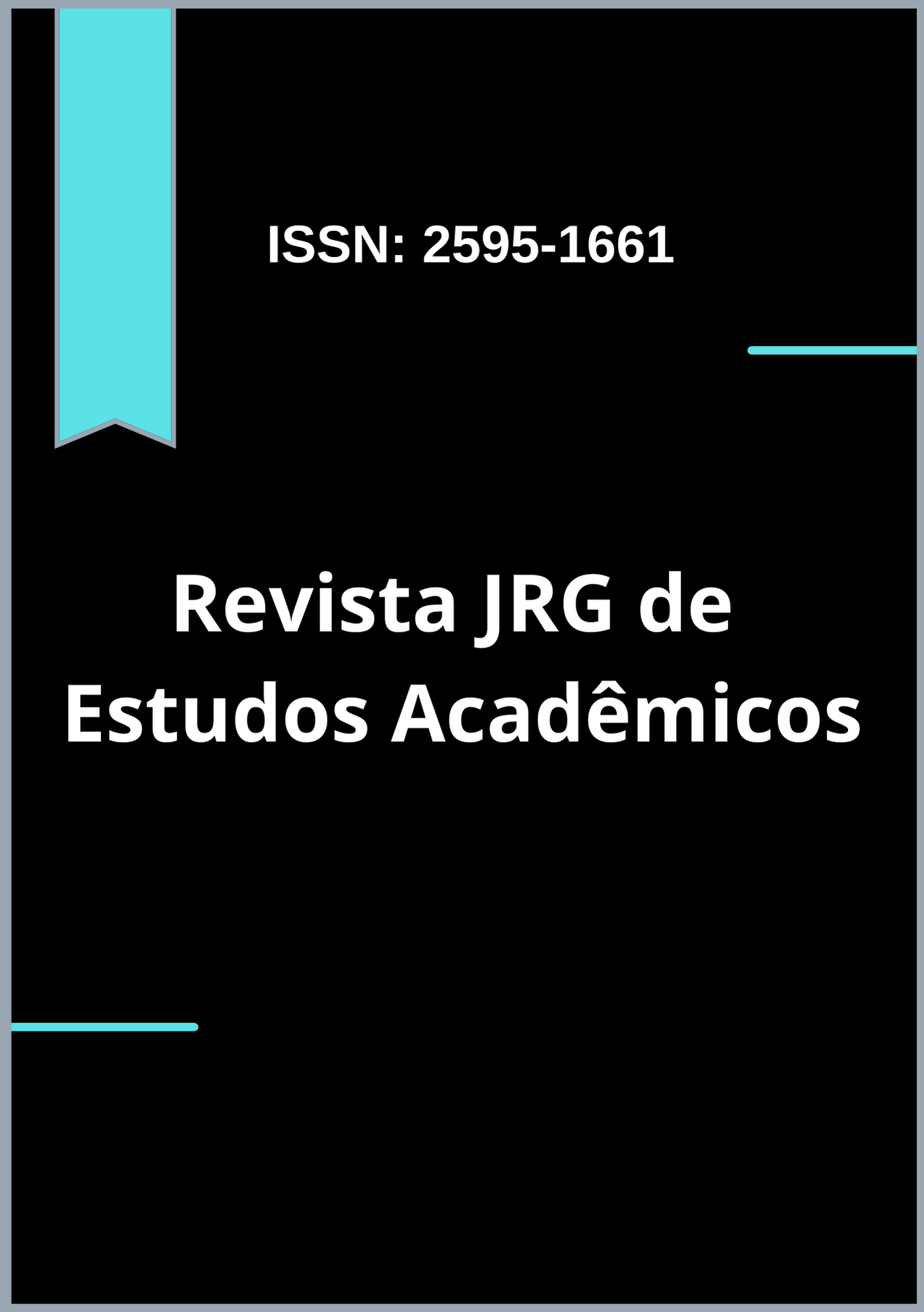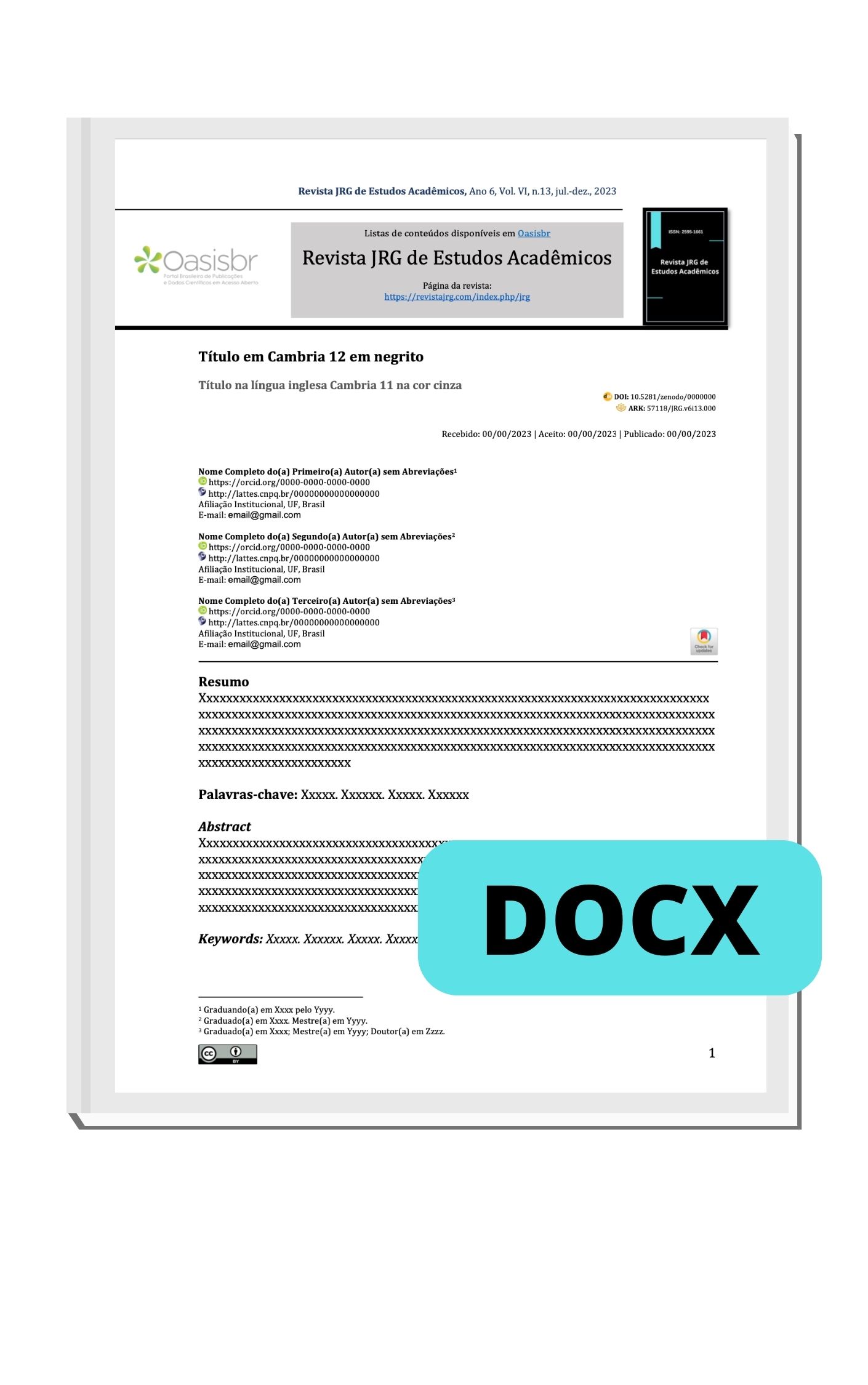A place for children? Visits by minors to adults in intensive care units
DOI:
https://doi.org/10.5281/zenodo.7753234Keywords:
intensive care units, visitors to patients, child, professional-family relations, humanization of assistanceAbstract
Having a family member hospitalized in an Intensive Care Unit (ICU) is an event with the potential to be traumatic for children, who may have difficulties understanding what is happening and dealing with the resulting feelings and concerns. The visitation of children to adult ICUs is a complex issue, with concerns about how the visit may affect their physical and emotional well-being and whether health professionals are prepared to deal with the situation. The objective of this systematic review is to present the literature of the last 10 years on the subject, highlighting the perceptions of those involved and the challenges encountered. Searches were carried out in the Scopus, SciELO, PubMED, LILACS and MEDLINE databases for original articles written in Portuguese or English and published between 2012 and 2022. After the screening process, 10 studies that met the eligibility criteria were identified. From them, a table was built with the summary of the main data of each article and a Thematic Analysis was carried out for the integration and interpretation of the information. The main results indicate that health professionals restrict children's visits to adult ICUs basing their arguments on personal beliefs and not on scientific evidence. Relatives of patients admitted to the ICU reported damage to the mental health of children when they were impeded from meeting the sick relative. A preparatory book for the visits was well evaluated by family members and professionals. As for the perception of the children themselves, it was identified that despite possible tension and fear touched on by the visits, they also bring positive feelings and relief from suffering. This study highlights the beneficial potential of children's visits to adult ICUs, the need to develop more resources and provide children with adequate preparations and follow-ups.
Downloads
References
Tsai PC, Yip PK, Tai JJ, Lou MF. Needs of family caregivers of stroke patients: a longitudinal study of caregivers’ perspectives. Patient Prefer Adherence [Internet]. 2015;9:449–57. Available from: http://dx.doi.org/10.2147/PPA.S77713
Gabriella Fonseca, Katia Freitas, Aloisio Silva Filho, Pollyana Portela, Elaine Fontoura, Marluce Oliveira. Ansiedade e depressão em familiares de pessoas internadas em terapia intensiva. Psicol Teor Prát [Internet]. 2019;21(1):312–27. Available from: http://pepsic.bvsalud.org/scielo.php?script=sci_abstract&pid=S1516-36872019000100013
Rosa RG, Tonietto TF, da Silva DB, Gutierres FA, Ascoli AM, Madeira LC, et al. Effectiveness and Safety of an Extended ICU Visitation Model for Delirium Prevention: A Before and After Study*. Crit Care Med [Internet]. 2017;45(10):1660. Available from: https://journals.lww.com/ccmjournal/Abstract/2017/10000/Effectiveness_and_Safety_of_an_Extended_ICU.9.aspx
Nassar Junior AP, Besen BAMP, Robinson CC, Falavigna M, Teixeira C, Rosa RG. Flexible Versus Restrictive Visiting Policies in ICUs: A Systematic Review and Meta-Analysis. Crit Care Med [Internet]. 2018;46(7):1175–80. Available from: http://dx.doi.org/10.1097/CCM.0000000000003155
Clarke CM. Children visiting family and friends on adult intensive care units: the nurses’ perspective. J Adv Nurs [Internet]. 2000;31(2):330–8. Available from: http://dx.doi.org/10.1046/j.1365-2648.2000.01293.x
MacEachnie LH, Larsen HB, Egerod I. Children’s and young people's experiences of a parent's critical illness and admission to the intensive care unit: A qualitative meta-synthesis. J Clin Nurs [Internet]. 2018;27(15-16):2923–32. Available from: http://dx.doi.org/10.1111/jocn.14498
Hauken MA, Senneseth M, Dyregrov A, Dyregrov K. Anxiety and the Quality of Life of Children Living With Parental Cancer. Cancer Nurs [Internet]. 2018 Jan/Feb;41(1):E19–27. Available from: http://dx.doi.org/10.1097/NCC.0000000000000467
Barkmann C, Romer G, Watson M, Schulte-Markwort M. Parental Physical Illness as a Risk for Psychosocial Maladjustment in Children and Adolescents: Epidemiological Findings From a National Survey in Germany. Psychosomatics [Internet]. 2007;48(6):476–81. Available from: http://dx.doi.org/10.1176/appi.psy.48.6.476
Howell KH, Barrett-Becker EP, Burnside AN, Wamser-Nanney R, Layne CM, Kaplow JB. Children Facing Parental Cancer Versus Parental Death: The Buffering Effects of Positive Parenting and Emotional Expression. J Child Fam Stud [Internet]. 2016;25(1):152–64. Available from: https://doi.org/10.1007/s10826-015-0198-3
Pakenham KI, Cox S. The effects of parental illness and other ill family members on the adjustment of children. Ann Behav Med [Internet]. 2014;48(3):424–37. Available from: http://dx.doi.org/10.1007/s12160-014-9622-y
Clarke C, Harrison D. The needs of children visiting on adult intensive care units: a review of the literature and recommendations for practice. J Adv Nurs [Internet]. 2001;34(1):61–8. Available from: http://dx.doi.org/10.1046/j.1365-2648.2001.3411733.x
Unicef, Others. Convention on the Rights of the Child. 1989; Available from: https://ecommons.cornell.edu/bitstream/handle/1813/98856/crc.pdf?sequence=1
Dias DM, Barreto JC, Silva JHR da, Silva-Barbosa CE da, Santos WABV, Morais MGC, et al. Humanização do cuidado na Unidade de Terapia Intensiva: revisão integrativa da literatura. Res Soc Dev [Internet]. 2022;11(4):e53911427852. Available from: https://rsdjournal.org/index.php/rsd/article/view/27852
Johnson DL. Preparing children for visiting parents in the adult ICU. Dimens Crit Care Nurs [Internet]. 1994;13(3):152–4, 157–5. Available from: http://dx.doi.org/10.1097/00003465-199405000-00008
Altera a Lei no 8.069, de 1990, para permitir o ingresso de crianças e adolescentes em estabelecimentos de saúde para visita de pacientes internados [Internet]. Projeto de Lei 622/20 Nov 3, 2020. Available from: https://www.camara.leg.br/proposicoesWeb/fichadetramitacao?idProposicao=2238984
Hwang DY, Zhang Q, Andrews A, LaRose K, Gonzalez M, Harmon L, et al. The Initial Impact of the Coronavirus Disease 2019 Pandemic on ICU Family Engagement: Lessons Learned From a Collaborative of 27 ICUs. Crit Care Explor [Internet]. 2021;3(4):e0401. Available from: http://dx.doi.org/10.1097/CCE.0000000000000401
Knutsson S, Golsäter M, Enskär K. The meaning of being a visiting child of a seriously ill parent receiving care at the ICU. Int J Qual Stud Health Well-being [Internet]. 2021;16(1):1999884. Available from: http://dx.doi.org/10.1080/17482631.2021.1999884
Pereira MG. Estrutura do artigo científico. Epidemiol Serv Saude [Internet]. 2012;21(2):351–2. Available from: http://scielo.iec.gov.br/scielo.php?script=sci_arttext&pid=S1679-49742012000200018
Covidence systematic review software, Veritas Health Innovation, Melbourne, Australia. Available from: http://www.covidence.org
Braun V, Clarke V. Using thematic analysis in psychology. Qual Res Psychol [Internet]. 2006;3(2):77–101. Available from: https://www.tandfonline.com/doi/abs/10.1191/1478088706qp063oa
Diretrizes e normas regulamentadoras de pesquisa envolvendo seres humanos [Internet]. Conselho Nacional de Saúde, Comissão Nacional de Ética em Pesquisa, Resolução número 466/12 de 12 de dezembro de 2012. Available from: https://conselho.saude.gov.br/resolucoes/2012/Reso466.pdf
Dispõe sobre as normas aplicáveis a pesquisas em Ciências Humanas e Sociais [Internet]. Conselho Nacional de Saúde, 510/16 de 07 de abril de 2016. Available from: https://conselho.saude.gov.br/resolucoes/2016/Reso510.pdf
Page MJ, McKenzie JE, Bossuyt PM, Boutron I, Hoffmann TC, Mulrow CD, et al. The PRISMA 2020 statement: an updated guideline for reporting systematic reviews. BMJ [Internet]. 2021;372:n71. Available from: http://dx.doi.org/10.1136/bmj.n71
Brauchle M, Nydahl P, Pregartner G, Hoffmann M, Jeitziner MM. Practice of family-centred care in intensive care units before the COVID-19-pandemic: A cross-sectional analysis in German-speaking countries. Intensive Crit Care Nurs [Internet]. 2022;68:103139. Available from: http://dx.doi.org/10.1016/j.iccn.2021.103139
Desai PP, Flick SL, Knutsson S, Brimhall AS. Practices and Perceptions of Nurses Regarding Child Visitation in Adult Intensive Care Units. Am J Crit Care [Internet]. 2020;29(3):195–203. Available from: http://dx.doi.org/10.4037/ajcc2020370
Digby R, Manias E, Haines KJ, Orosz J, Ihle J, Bucknall TK. Family experiences and perceptions of intensive care unit care and communication during the COVID-19 pandemic. Aust Crit Care [Internet]. 2022;0(0). Available from: http://www.australiancriticalcare.com/article/S1036731422000352/abstract
Fergé JL, Le Terrier C, Banydeen R, Kentish-Barnes N, Derancourt C, Jehel L, et al. Prevalence of Anxiety and Depression Symptomatology in Adolescents Faced With the Hospitalization of a Loved One in the ICU. Crit Care Med [Internet]. 2018;46(4):e330–3. Available from: http://dx.doi.org/10.1097/CCM.0000000000002964
Fergé JL, Banydeen R, Le Terrier C, Fize H, Miguel M, Kentish-Barnes N, et al. Mental Health of Adolescent Relatives of Intensive Care Patients: Benefits of an Open Visitation Policy. Am J Crit Care [Internet]. 2021;30(1):72–6. Available from: https://aacnjournals.org/ajcconline/article-abstract/30/1/72/31262/Mental-Health-of-Adolescent-Relatives-of-Intensive?redirectedFrom=fulltext
Frivold G, Ågård AS, Jensen HI, Åkerman E, Fossum M, Alfheim HB, et al. Family involvement in the intensive care unit in four Nordic countries. Nurs Crit Care [Internet]. 2022;27(3):450–9. Available from: http://dx.doi.org/10.1111/nicc.12702
Hanley JB, Piazza J. A visit to the intensive cares unit: a family-centered culture change to facilitate pediatric visitation in an adult intensive care unit. Crit Care Nurs Q [Internet]. 2012;35(1):113–22. Available from: http://dx.doi.org/10.1097/CNQ.0b013e31823b1ecd
Knutsson S, Bergbom I. Children’s thoughts and feelings related to visiting critically ill relatives in an adult ICU: A qualitative study. Intensive Crit Care Nurs [Internet]. 2016;32:33–41. Available from: http://dx.doi.org/10.1016/j.iccn.2015.07.007
Knutsson S, Enskär K, Golsäter M. Nurses’ experiences of what constitutes the encounter with children visiting a sick parent at an adult ICU. Intensive Crit Care Nurs [Internet]. 2017;39:9–17. Available from: http://dx.doi.org/10.1016/j.iccn.2016.09.003
Valls-Matarín J, Peradejordi-Torres RM, Calvet-González E, Jorge-Castillo A, Calvo-Alonso S, Sandalinas-Mulero I. Visit of minors in an intensive care unit. What is the opinion of health staff? Enferm Intensiva [Internet]. 2020;31(2):52–9. Available from: http://dx.doi.org/10.1016/j.enfi.2019.01.003
Horikoshi Y, Okazaki K, Miyokawa S, Kinoshita K, Higuchi H, Suwa J, et al. Sibling visits and viral infection in the neonatal intensive care unit. Pediatr Int [Internet]. 2018;60(2):153–6. Available from: http://dx.doi.org/10.1111/ped.13470
Falk J, Wongsa S, Dang J, Comer L, LoBiondo-Wood G. Using an evidence-based practice process to change child visitation guidelines. Clin J Oncol Nurs [Internet]. 2012;16(1):21–3. Available from: http://dx.doi.org/10.1188/12.CJON.21-23
Sutter C, Reid T. How Do We Talk to the Children? Child Life Consultation To Support the Children of Seriously Ill Adult Inpatients [Internet]. Vol. 15, J Palliat Med. 2012. p. 1362–8. Available from: http://dx.doi.org/10.1089/jpm.2012.0019
Kean S. Children and young people visiting an adult intensive care unit. J Adv Nurs [Internet]. 2010;66(4):868–77. Available from: http://dx.doi.org/10.1111/j.1365-2648.2009.05252.x
Borges KMK, Genaro LT, Monteiro MC. Children visit to intensive care unit. Rev Bras Ter Intensiva [Internet]. 2010;22(3):300–4. Available from: https://www.ncbi.nlm.nih.gov/pubmed/25302438
Davidson JE, Aslakson RA, Long AC, Puntillo KA, Kross EK, Hart J, et al. Guidelines for Family-Centered Care in the Neonatal, Pediatric, and Adult ICU. Crit Care Med [Internet]. 2017;45(1):103–28. Available from: http://dx.doi.org/10.1097/CCM.0000000000002169
Knutsson S, Samuelsson IP, Hellström AL, Bergbom I. Children’s experiences of visiting a seriously ill/injured relative on an adult intensive care unit. J Adv Nurs [Internet]. 2008;61(2):154–62. Available from: http://dx.doi.org/10.1111/j.1365-2648.2007.04472.x











































